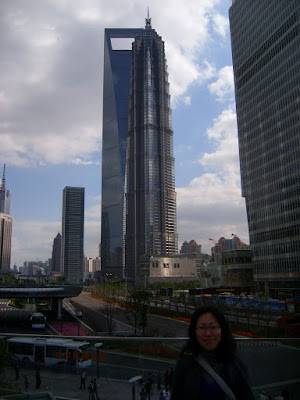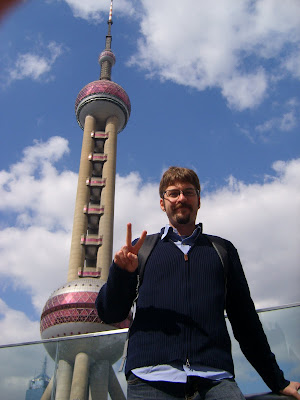

I had seen the January issue of
National Geographic for sale a few times around town, but there is a little second hand book store that I go to every month where I can buy the previous month’s issue for a deeply discounted price. However, this time they did not have it available and so I finally relented and bought a copy online to be delivered.
I especially wanted this issue because I knew that they were running a story on the world’s population, something that I am very interested in. To my happiness I found out that this article was just part of a series that the magazine will do this year as the world approaches the birth of the 7 billionth person sometime late this year.
The story itself was interesting, but mainly just confirmed a lot of things that I had already learned from other sources. What it really did was open up a discussion between Aya and I about children. We have talked about having children and we plan to soon, but the issue is really how many and whose? Of course, they will be our children, but there is a question of if we want that to be biologically so or not.
As the world’s population swells it brings a number of environmental questions forward which is really why I am interested in population issues. Obviously more people equals more consumption of goods and more consumption of goods mean more of the planet’s resources must be used to make those goods and more waste is produced as a result.
Food and the resources used to produce it will sky rocket in use. Not only this, but as people become more wealthy their diet often turns to more meat consumption and that means much more water and grains used to produce that meat. Every pound of meat requires many pounds of grain and 600 gallons of water must be used (
an average, beef is more, goat is less). Common sense will tell you that grain takes much less. Think of how many more people could be fed off of the grain and water than could be fed with the pound of meat. Now multiply that by a few hundred million.
Thomas Malthus predicted that population growth would vastly outpace food production and at the root he was right, but thanks to the efforts of the Green Revolution and
Norman Borlaug the impending train wreck between population and food was averted for a time. However, we are facing it again. Norman’s goal was to produce crops that yielded more food per acre/plant in order to eliminate starvation. It pretty much worked, but could not continue to work. The simple reason is that the world’s population did not stand still. People did not think to reduce growth rates to coincide with food production. When less people starved more people had babies. Somehow the connection gets lost. This means that while crop yields grew so did numbers of people. All this wouldn’t matter too much except for the one factor we can’t improve on greatly. That is our planet, its arable land, its clean water, its natural resources and ecosystems.
As medicine and nutrition have improved life spans have increased dramatically, basically doubling in developed countries within the past few hundred years so that the traditional population pyramid became more top heavy. In developed countries, the number of centenarians is increasing at approximately 7% per year, which means doubling the centenarian population every decade, pushing it from some 455,000 in 2009 to 4.1 million in 2050. Japan is a great example of
this.
The neat thing is that once countries became developed their growth rates declined. Most of the countries you can think of as developed nations have a negative growth rate. However, most of the countries you think of as developing nations are not necessarily the environmental plagues of the world. Although human numbers do add strains to environments it is also the habits of those people. Those in the developed world
consume far more per capita in terms of goods than those in a developing country. So that begs the question, who is more environmentally irresponsible? Is it the person in the developed nation with 2 kids or the person in the developing country with 5?
These things all lead me to the question of, should I have children? How many? Whose should they be? Now before I pose the next batch of questions lets assume that I desire to have children, which I do, and that I want to be as good to the planet and everyone on it now and in the future, which I do.
The questions tumble out; if I wanted to be environmentally friendly I would have no children? The world will go on after I am gone, why should I add to its problems by having another mouth to feed, cloth, educate, and comfort? Would not my energies be better spent helping the people who are alive now? Would not I be better off helping a child who has already been born, but is not wanted? Should I adopt a child? If I adopt a child thinking environmentally I should adopt one from an area of the world with a similar consumption habit to the one I live in right? Otherwise I will be raising a child who would have consumed less in a lifetime I a developing society to a society in which they would consume more, correct?
However, they would not be my biological child and I have to assume that part of my desire to have children is to have one of my own. Yes, there is a degree of selfishness in all of this. Despite all my concerns for the future of our species as a whole I also have a bit of concern for myself. The fountain of youth is not in the Florida everglades, it is in the genes you pass on to your kids. I should have just as much right as anyone else to do so, but I can’t get past the idea that on an intellectual level I am betraying my principles to quench my emotional desires.
However, I have my other half and it takes two to tango so I am pretty sure that we will have at least one biological child of our own. Not to mention that Japan, a country with a rapidly shrinking population, offers a hefty monetary incentive to have a child. I can’t be certain, but it looks to be in the neighborhood of 8,000 dollars in payments and benefits. Many other countries are doing the same thing in an effort to create a boon of young workers to support their aging society.
As most people in the developing world I think we will stop with one child to ensure that we can devote as much time and money to the upbringing of that child as we can. However, the question of adoption then is still on the table. If we were to adopt a child from a similarly well off country would we be tipping the scales any more than had already occurred? I think the answer is no. I can assume a certain degree of consumption and actually the child might consume less in a household with environmentally conservative parents.
Once the world population creeps past the 7.25 billion mark my child should be entering the population pool. I guess the only real question is, will they be using the buddy system.




